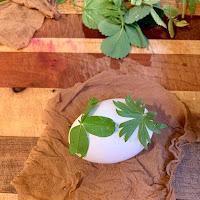October/November 2023
In Art For Bears TK-4th grade students are exposed to a highly engaging curriculum, which is aligned with the National Visual Art Standards. Ms. Libby’s expertise lies in building, refining, and implementing both discrete curricula in the visual arts and arts-integrated STEAM instruction across curricula. Mis. Libby cultivates student engagement and assessment strategies that make learning visible and lay the groundwork for future exercises in inquiry. Students are taught the language of the visual arts, connecting to history, science, math, social-justice, as well as personal views, and the world.
TK/K: Mexican Amate Bark Painting
TK and Kindergarten artists were engrossed in the Amate Bark painting tradition which originates from San Pablito, a small mountain village in Mexico where this beautiful craft is still taught today. Students sketched Mexican and Mayan inspired designs, such as sun, birds, and floral motifs. To simulate the process of this beautiful hand made amate paper and to create a bark-like texture, students crumpled their upcycled brown paper bags and burnished the paper with flat, smooth rocks. Students used stabilo paint pens to achieve the gorgeous vibrant, saturated colors on their bark paintings. The finished art pieces turned out stunning!
1st: Paper Molas
The Mola or Molas is a hand-made textile that forms part of the traditional women's clothing of the indigenous Guna people from Panamá. Their clothing includes a patterned wrapped skirt, a red and yellow headscarf, arm and leg beads, a gold nose ring and earrings in addition to the mola blouse.
First grade students created colorful paper molas by tracing an animal shape onto construction paper. Repeating the same shape numerous times increasing its size slightly each time. With this technique students achieved the layered effect of a traditional mola. Students enjoyed practicing their scissor cutting skills and adding additional designs around and on top of their animal shapes.

Inktober:
Inktober is a drawing challenge open to artists of all ages around the world. Illustrator Jake Parker created Inktober in 2009 as a challenge to improve his inking skills and develop positive drawing habits. It has since grown into a worldwide endeavor with thousands of artists taking on the challenge every year. When Jake Parker started Inktober he had a few goals in mind, and these have not changed in the 10+ years the Inktober challenge has been running. These goals are:
Help artists get better at drawing
Help artists find other cool artists
Help artists develop positive drawing habits of practicing daily/weekly
Second and third grade students took on the challenge of starting each art class with a 5 min quite sketching practice. Creating a drawing inspired by the daily Inktober prompt or just sketching away with an ink pen or pencil of their own choosing.
2nd: Navajo Rug Weaving
Navajo weaving (Navajo: diyogí) are textiles produced by Navajo people, who are based near the Four Corners area of the United States. Navajo textiles are highly regarded and have been sought after as trade items and for purchase for more than 150 years.
“Because the Navajo reservation is so big, our stories are similar but each is a little different. For what people know in New Mexico, people in Arizona have a different version. So, it's really hard to pinpoint the true meaning behind any particular rug. Rugs are like a verse in the Bible—there are 365 ways of interpreting one verse; Navajo weaving is like that, too. Every rug here is completely different and made by an individual, but they all fall under one category—Navajo weaving. This is just like people—we are all Navajo, but we are each different. Our weaving reflects individual differences, too.” —Barbara Ornelas, Master Weaver
Second grade students constructed simple looms out of stiff felt. Using twine students practiced weaving turning their looms into a small blanket. Students were instructed on the personal and cultural symbolic meaning of Navajo tapestry designs and patterns. Inspired by common Navajo symbols like crosses, triangles, diamonds and zigzags, students decorated their weaving with felt scraps.
3rd: Dreamcatchers
In many Native American tribes, a dream catcher is a handmade willow hoop woven to a web or literally, a net. They can include feathers and beads, and they're traditionally suspended on cradles as a form of armor and protection.
Dream catchers are widely viewed as a symbol of oneness among numerous indigenous cultures and tribes. They're also generally looked at as an indication of Native American identity. However, some Native Americans believe dream catchers have been appropriated and offensively exploited by non-Native Americans.
Third grade students enjoyed listening to Hazel, Native American storyteller sharing the magical story: “Kôhkom meets Spider”. Grateful for Kôhkom’s kindness, Spider shares with her a valuable gift, a dreamcatcher. After the story students learned how to draw the geometric structure of a dreamcatcher. The radial symmetry was soothing to draw and students implemented their own creative license in drawing feathers, beads, personal decorations, colorful details and backgrounds with prismacolor pencils.
4th: Oaxac Alebrijes Animals
Traditionally, Alebrijes are carved and painted animal figurines that have become a form of symbolic art from Mexico. The word Alebrije means “imaginary” or “fantasy,” describing a style of animal carvings with exceptional paint schema.
Fourth grade students watched a video by Latin America Editor Lucia Newman as she reported from an artisan workshop in Oaxaca. Inspired by the skillful wood carvings students used Model Magic clay to shape and sculpt their personal Alebrijes. Using tempera paint and paint markers students painted their creatures with delicate designs and patterns.
















Comments
Post a Comment